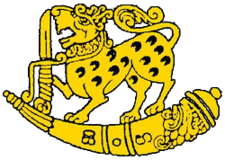An island wide state of emergency was declared by the government and curfews were imposed where necessary. The entire Volunteer Force was called on active service and deployed, as was the Regular Force. At different levels of intensity these conditions prevailed in many parts of the island and it took several weeks/months to return to any semblance of normal life after the bitter and tragic events of what came to be called Black July 1983.
The Advent of the Indian Peace Keeping Force (IPKF) in Sri Lanka:
Efforts were made by the governments of Sri Lanka and India to lure the LTTE to the peace process and defuse the military situation, by the former declaring a unilateral cease-fire for 10 days during the Sinhala and Tamil New Year period in 1987, only drew the trade mark LTTE response of intransigence. The government was then compelled to attack terrorist bases and facilities in the Jaffna Peninsula. Operation ‘Liberation’ was launched and the LTTE leader Prabhakaran’s birth place; the Vadamarachchi area, was overrun by government forces which was a severe blow to the LTTE. This overwhelming success ruffled the feathers of India intervened.
A flotilla of Indian boats, supposedly with humanitarian aid for the people of Jaffna, attempted to enter the Sri Lankan waters. These were intercepted and turned away by a Sri Lankan Navy. The following day, four Indian Air Force cargo aircraft escorted by an equal number of Mirage fighter aircraft flew over the Jaffna Peninsula para dropping food supplies. However, prior to the arrival of the Indian Aircraft over Sri Lankan airspace the government issued instructions to its military to treat Indian Aircraft as 'friendly aircraft'. This followed by Operation 'Liberation' being aborted on instructions of the President who was also the Commander in Chief of the Armed Forces. Respected commentators on Indian intervention in Sri Lanka have hinted at a probable Indian invasion of Sri Lanka if it continued with Operation 'Liberation'.
On 29th July 1987, after much diplomatic parleys across the Palk Straits between Colombo and New Delhi the Indo-Sri Lanka Peace Accord (to establish Peace and Normality in Sri Lanka) was signed in Colombo by President JR Jayewardene and Prime Minister Rajiv Gandhi.
In the Accord that was signed by the two countries, paragraph 2.9 stipulated that a cessation of hostilities would come into effect all over the island within 48 hours of the signing of the Agreement; and that all arms presently held by militant groups would be surrendered in accordance with an agreed procedure to authorities designated by the Government of Sri Lanka. It further laid down that consequent to the cessation of hostilities and the surrender of arms by militant groups, the Army and other security personnel would be confined to barracks in camps.
Following the signing of the Accord, the Indian Peace Keeping Force (IPKF) landed in Sri Lanka and deployed itself in camps all over the North and East of the country. The IPKF was not an invading force. Its presence was to prevent any clashes between the government military forces and the LTTE and help maintain that détente between these two while simultaneously, at different levels, the bureaucratic and political mechanisms arising out of the Agreement were being negotiated or processed. All of which in the end, hoped to establish Peace and normality in Sri Lanka.
The JVP uprising of 1988/1989
The JVP which maintained a very low profile since it was proscribed in 1983 made use of the Indian Intervention in 1987 and the presence of the IPKF on Sri Lankan soil to raise its head and agitate, often in destructive and crude inhuman ways. The JVP branded the supporters of the Accord as traitors. They organized mass demonstrations against the Indo-Lanka Peace Accord, exhorted people to boycott goods manufactured in India. Retailers were even forced to take Indian merchandise off their shelves under the threat of death.
The JVP then indulged in various activities to bring a fear psychosis on the people. Politicians, clergy and or anyone they deemed anti JVP were targeted. Public transport resources, isolated electric transformers and government institutes were torched or damaged. Work stoppages were called for to disrupt essential services to the community. Information and intelligence was minimal as people feared inhuman reprisals or death. All military styled armed activity of the JVP were undertaken by its militant wing, the Deshapremi Janatha Viyaparaya (DJV).
Such activity by the JVP resulted in military troops being deployed in all parts of the country to suppress the JVP. Coordinating Officers were appointed by the Government for each district and they were made responsible for the security of such districts. By November 1989, with the capture of the JVP’s leader, the Armed Services were able to stabilize the security situation of the country.





